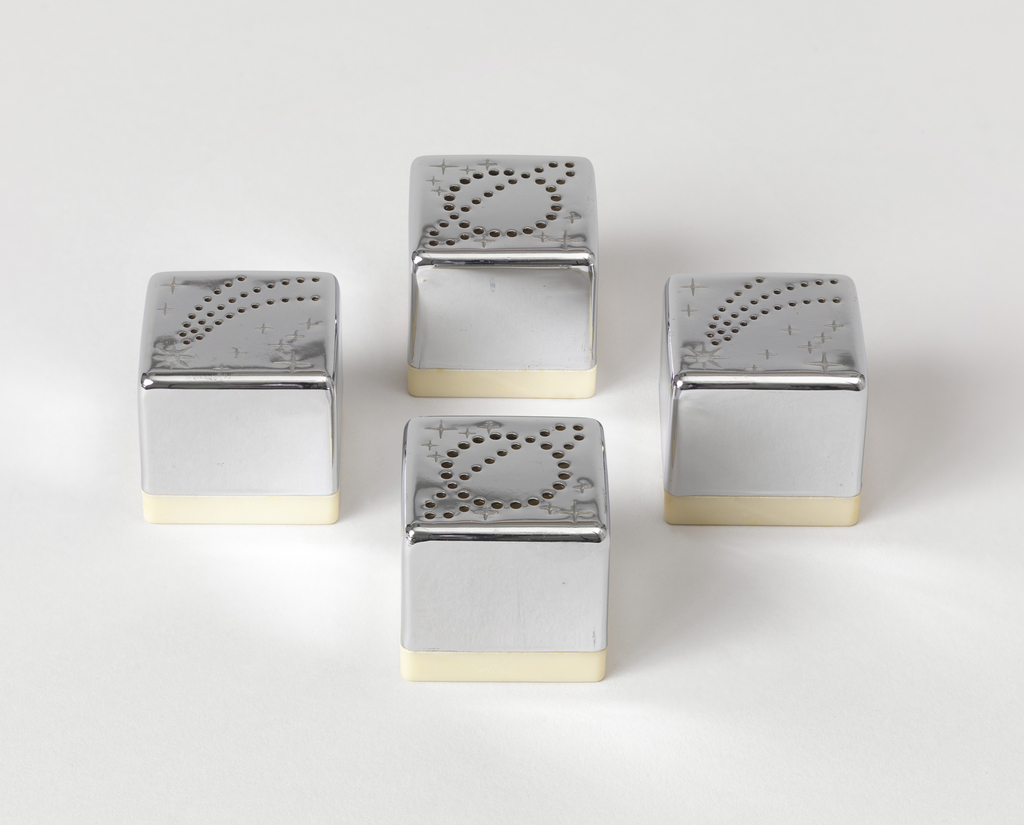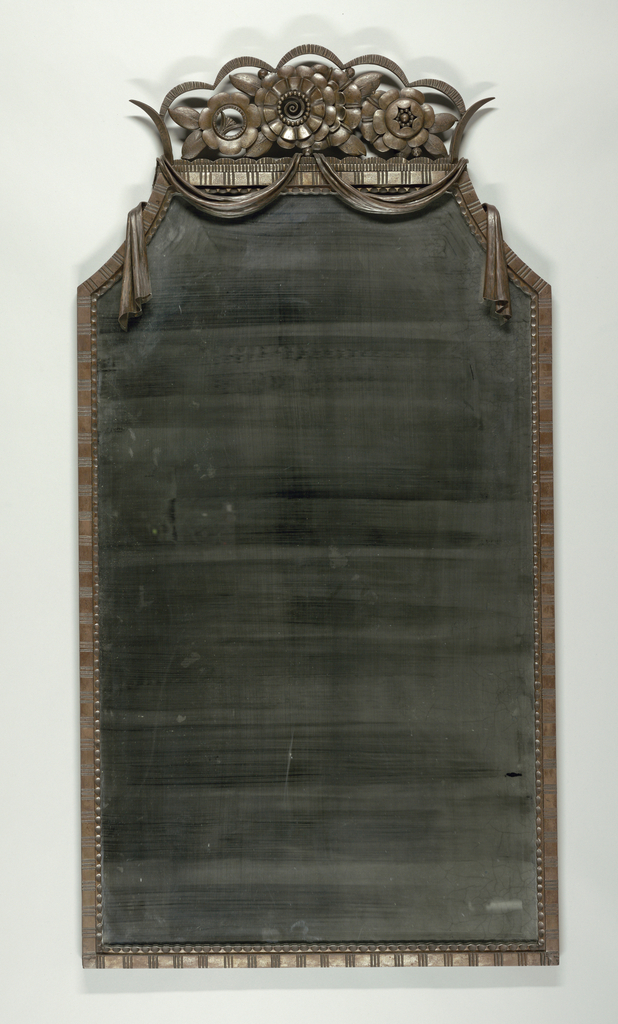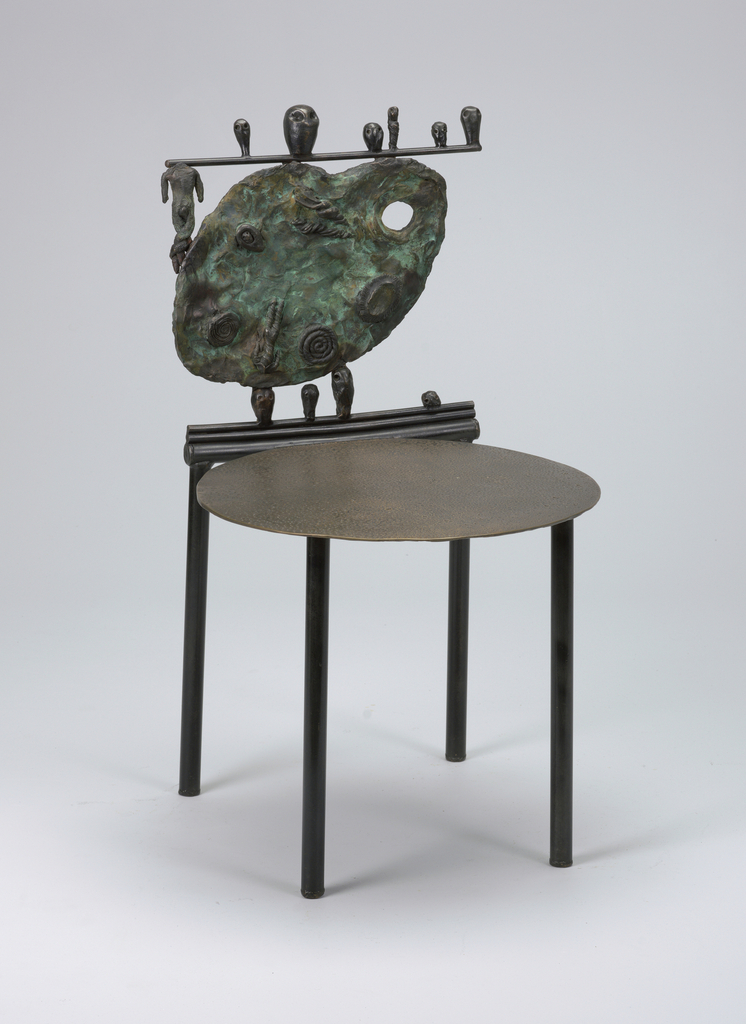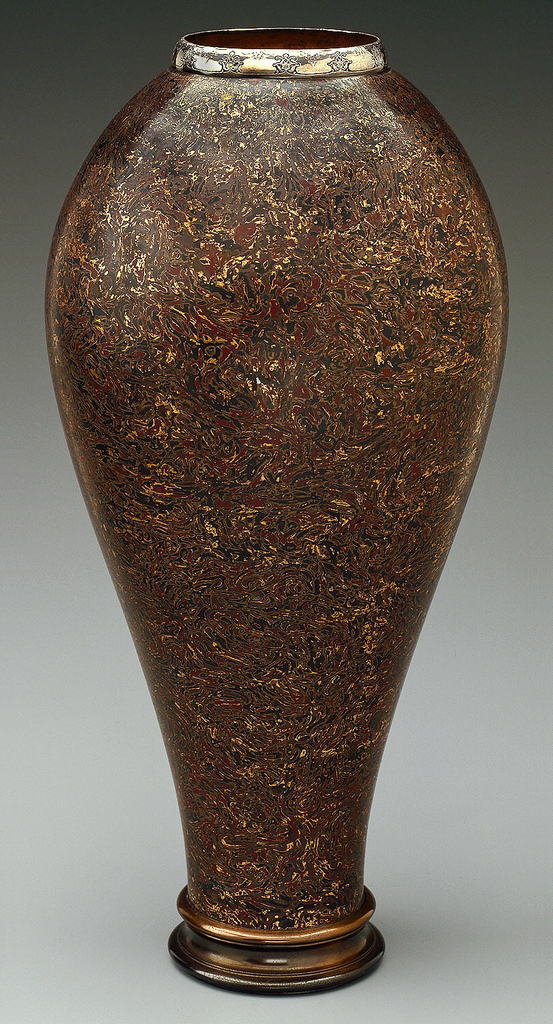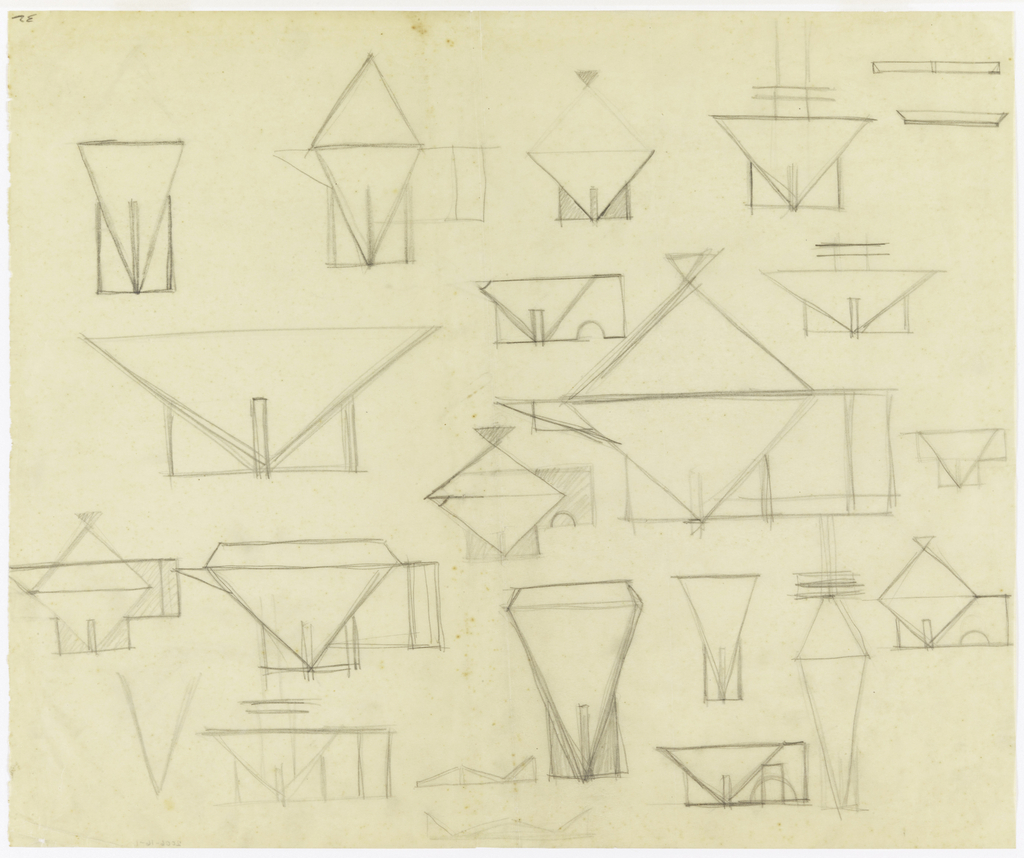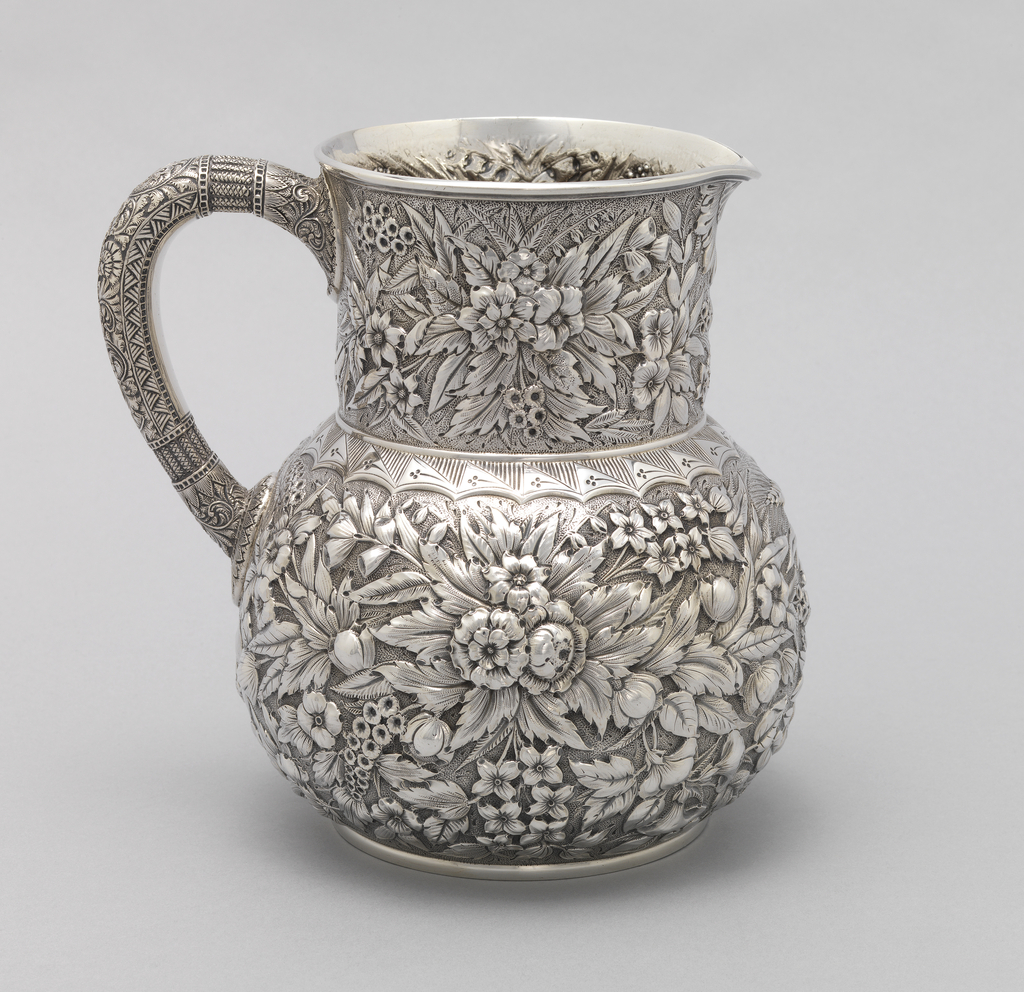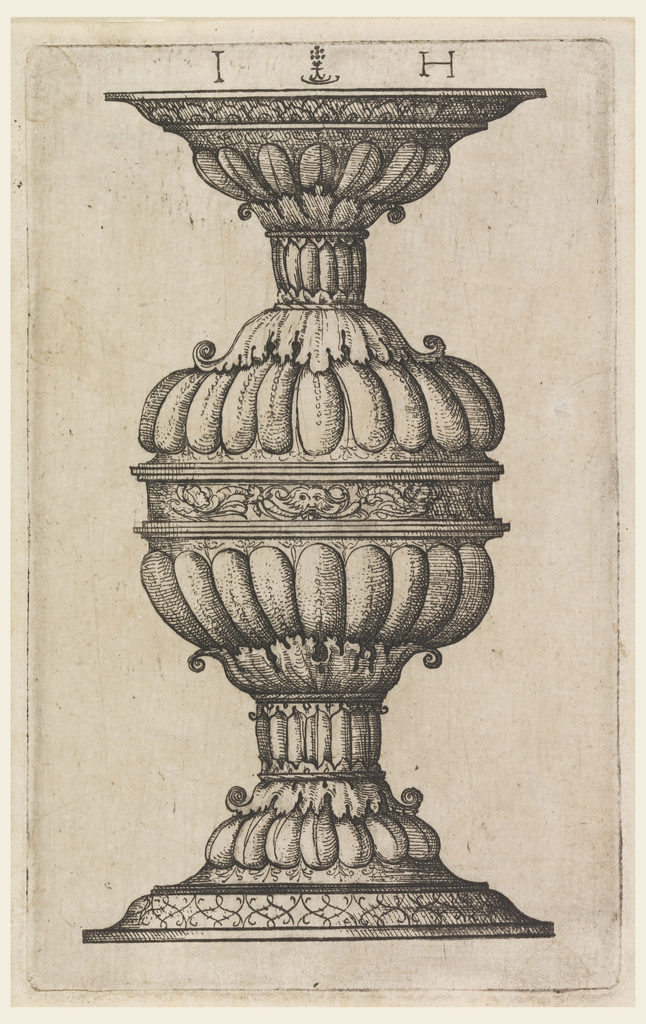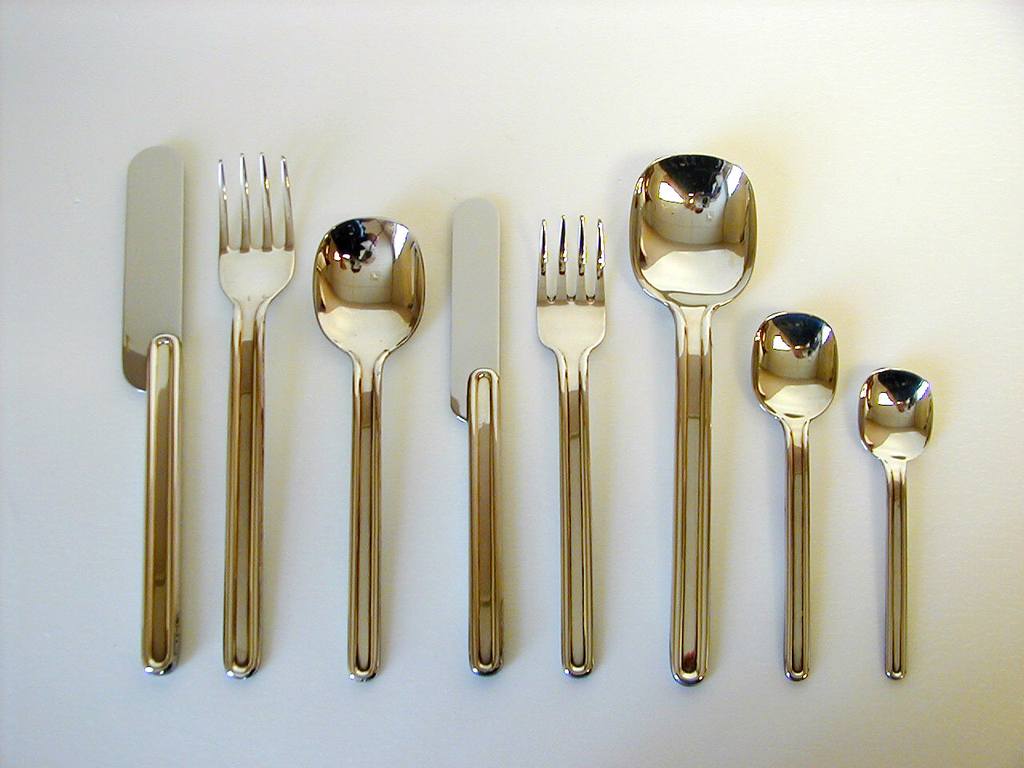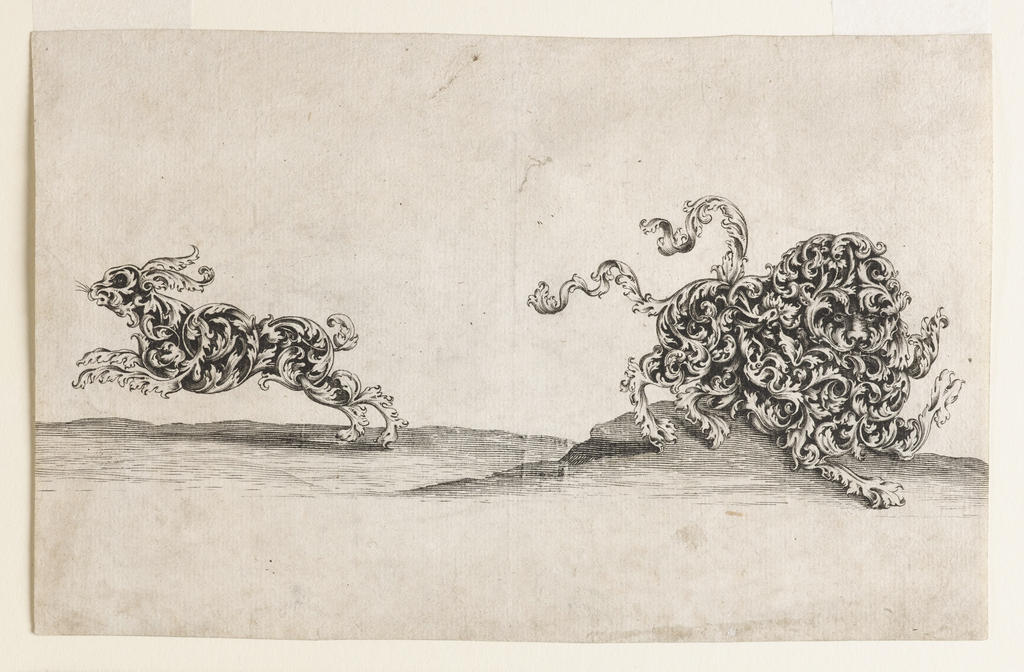The clean-lined geometric forms of these salt and pepper shakers show American modernism’s affinity for simplicity. During the 1930s the emergence of chromed metal, steel, and aluminum tableware coincided with the rise of modernist designs for everyday objects. These simple metal cubes were created with cost-effective manufacturing techniques, stamping and piercing, to create utilitarian and...
This post was originally published on December 12, 2015. The French designer Edgar Brandt spurred a revival of interest in interior furnishings made of iron in the 1920s. His participation in the 1925 Paris Exposition won him great praise. Brandt’s ironwork was admired throughout the fair; he designed the gates of the front entrance, his...
In celebration of Women’s History Month, March Object of the Day posts highlight women designers in the collection. The Oka chair, by Michele Oka Doner, is both a utilitarian furnishing and a highly detailed sculptural piece. The chair’s seat is a flat textured disk which rests on straight, unadorned legs. The back, where all the...
Tiffany & Co. exhibited an extraordinary mixed metal vase at the Paris 1889 Universal Exposition. Created from a layered block of 24-karat gold, silver, and copper, it was 32 inches high, priced at $5000, and the largest known object ever made using the Japanese technique of mokumé. “The most remarkable triumph of Tiffany & Co....
Gail Davidson discusses modernist designer Ilonka Karasz's geometric iterations for tableware.
During the second half of the nineteenth century, there was a burgeoning interest in the designs of the Middle East, Japan, and China. This passion for all things that were “exotic” in the eyes of Americans led to a craze for objects inspired by these international decorative arts. At the time, much of the silver...
In 16th century Germany, the popularity of Doppelpokal, better known as double goblets or cups, and the taste for elegant, classicized forms are reflected in this small print by Hieronymus Hopfer (German, active ca. 1520-1530). As the ancestors of wine glasses, double cups, which fit over each other at the rim, were intended for ceremonial...
Versatile designer Lella Vignelli, who died on December 22nd, played a vital role in firmly establishing the clean lines and clarity of Modernism in twentieth century American design. Her designs were pertinent throughout the late twentieth century and remain so today. Vignelli was born into a family of architects in Udine, Italy in 1934. She...
A lion and a hare are composed entirely of scrolling acanthus leaves in this late-seventeenth-century engraving. It is the fifth plate from a suite of six designs for gold ornament, entitled Neu-ersonnene Gold-Schmieds Grillen (New Designs for Ornaments in Gold). The acanthus motif, whose origins date to ancient Greece and Rome, was omnipresent in European...
